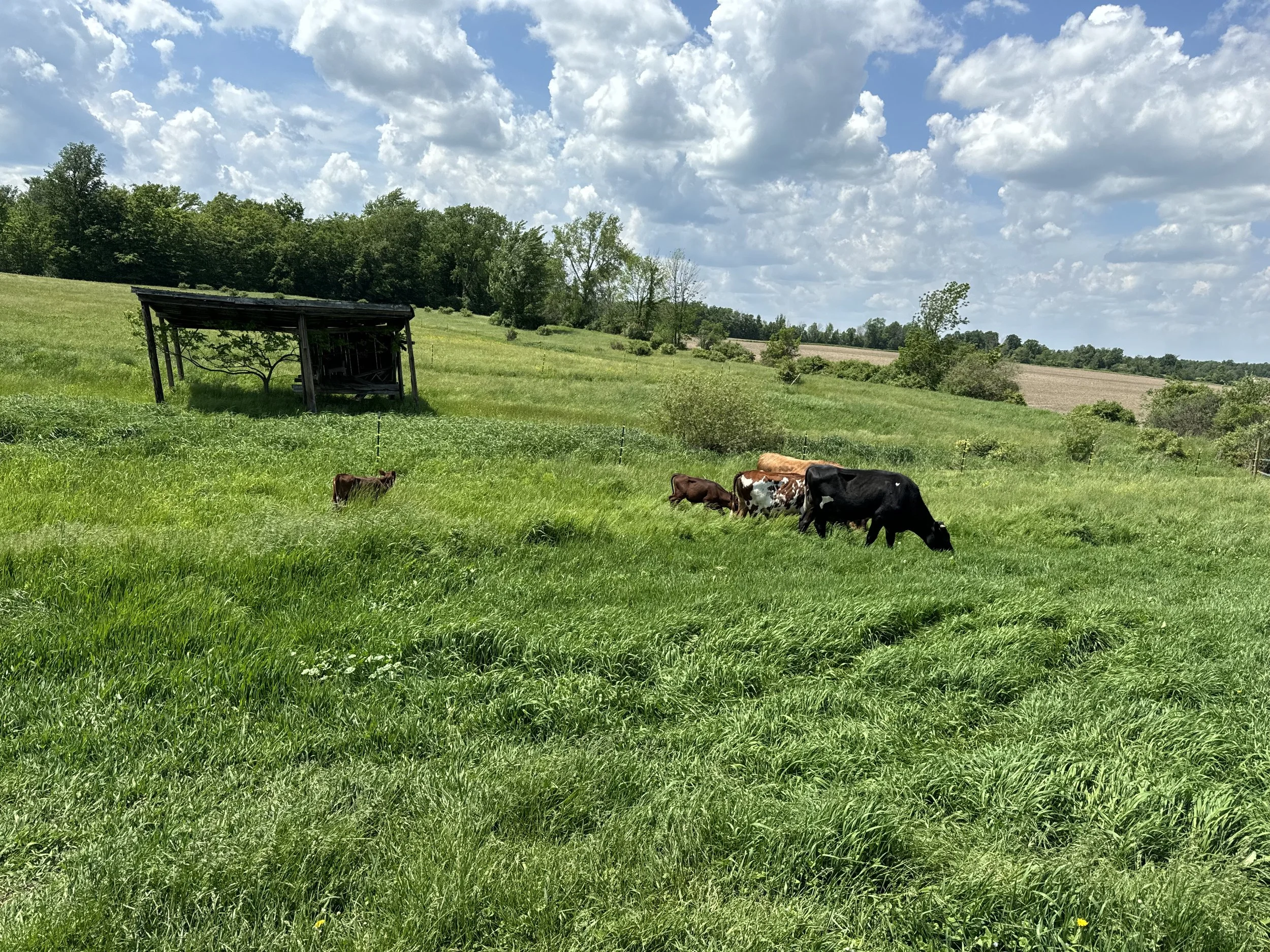Gooseflower Farm
It all started with four chicks—literally—as part of an animal study project in Laura’s fourth grade class. The chicks came home on weekends, and soon dinner table conversations with our (then high school-aged) children turned to questions about eggs, animal care, and humane egg production.
In our typical fashion of going down rabbit holes, we quickly found ourselves researching where our pork, beef, and chicken came from—and more importantly, how the animals were treated before ending up on our plates. It didn’t take long for us to realize that we wanted more control over how our meat was raised, what the animals were fed, and the quality of life they experienced.
David came home one day with ten white meat birds. We built our first chicken tractor and started moving them across our backyard. A friend taught us how to harvest and process the birds, and before long, we had 30 laying hens, three roosters, and 50 meat birds. Of course, that attracted hawks and foxes, and we quickly learned how to build a Fort Knox-style chicken fortress. Curiosity sparked further: we added turkeys, then rabbits. Our son took on five pigs as a junior-year project—and that’s when the dream outgrew our backyard.
Moving to Trumansburg, NY made it all real. With more space and clearer goals, we transitioned from backyard poultry to raising pigs and beef cattle. While we still keep a flock of egg-layers, we’ve taken a break from raising meat chickens—for now.
One of the best things to happen since moving here has been our partnership with our neighbors at Remembrance Farm. Their biodynamic dairy provides us with Ayrshire calves, a hardy dual-purpose breed from Scotland known for thriving on an all-grass diet. We raise these calves into 100% grass-fed beef over the course of 22–24 months, using intensive rotational grazing to mimic natural herd movement. This approach builds soil health, nourishes our pastures, and produces beautifully marbled beef—comparable in tenderness and flavor to grain-finished meat, but without the health compromises that come with feeding cattle corn.
These days, our work is centered on raising animals in a way that respects their nature, nourishes our land, and puts real, transparent food on the table—for our family and yours.
